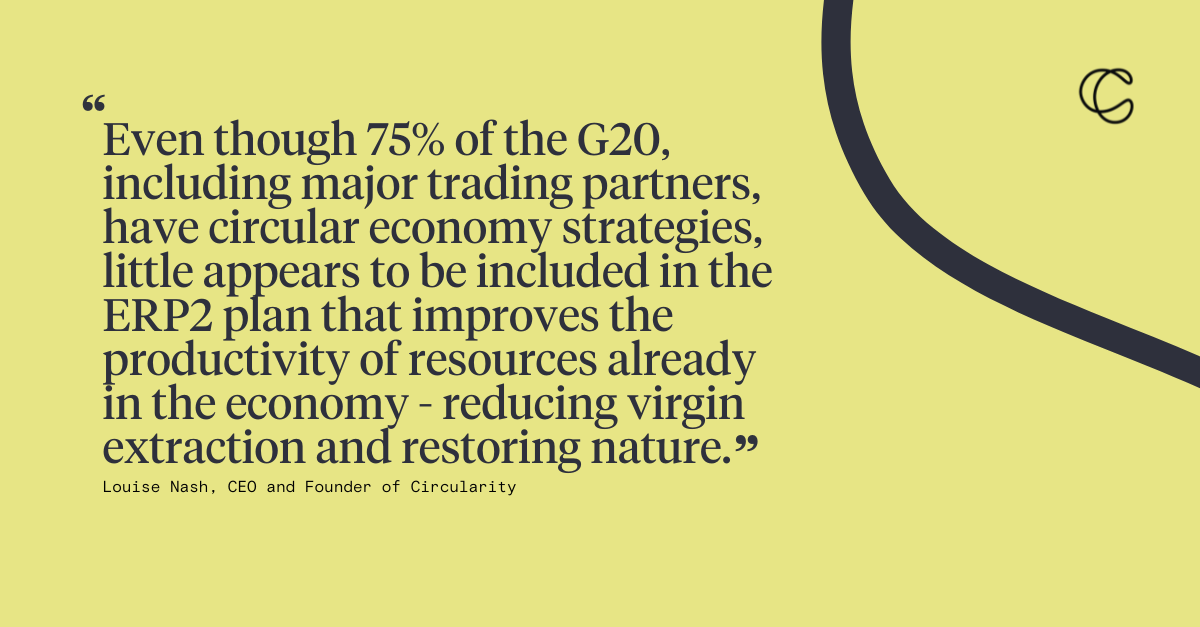The second Emissions Reduction Plan has been released. How does it stack up against the first?
The second Emissions Reduction Plan (ERP) has been released by the Ministry for the Environment. In this document, the coalition government outlines its plans to reduce emissions in New Zealand during the second emissions budget period (2026 - 2030)
To achieve our emission goals, the Hon. Simon Watts, Minister of Climate Change states -
“We will not accept shutting down productive sectors of the economy to meet emissions targets. Rather, we will use a technology-led approach to allow production to increase as our emissions come down based on a least-cost, net-based approach”.
Indeed, the IPCC did signal that “Technology is among the central driving forces of GHG emissions” but equally that “Reducing GHG and CO2 emissions from agriculture and land use in general critically depends on the DIFFUSION of new technologies and PRACTICES that could include less fertilizer-intensive production and livestock management.
In this second ERP, there are five priority pillars:
1. Infrastructure is resilient and communities are well prepared.
2. Credible markets support the climate transition.
3. Clean energy is abundant and affordable.
4. World-leading climate innovation boosts the economy.
5. Nature-based solutions address climate change.
It doesn’t make the cut as a priority pillar, but there is also now a chapter on waste (10). Even though the global rhetoric has moved on from this myopic view that waste reduction is a waste issue, not one arising from the current economic model that rewards low-cost, single-use, and often harmful materials.
The linear economy is mentioned, but not the circular one.
We did see the word reuse rather than just recycling (hopeful?), as well as the priorities for the Waste Minimisation Fund (WMF) -
Divert organic waste, including from construction and demolition, and process it. (groundbreaking strategy there)
Develop and implement schemes for businesses, manufacturers and consumers to take responsibility for the products they produce and buy (product stewardship schemes) (nothing new)
Expand and upgrade resource recovery facilities (including transfer stations) BAU
Investigate and, where appropriate, develop infrastructure for renewable energy recovery of hard-to-recycle materials (eg, wood waste)
Nothing breakthrough there, and there is no mention of leveraging innovation, new business models, or practices that design out waste, keep materials in use, and regenerate living systems.
Formerly known as the circular economy chapter in ERP1.
The previous ERP included a chapter on the circular bioeconomy to reduce emissions -this has been completely disregarded even though it was identified as -
‘…essential to meeting our emissions budgets and our 2050 targets. ….it will create new opportunities (including new jobs such as in resource recovery, bioproducts and design), drive innovation, reduce the amount of waste we produce, and can result in cost savings for households and businesses…provide a significant competitive advantage as the world moves away from fossil fuel-based products to bio-based materials, products and chemicals…lead to a better balance between the emissions we generate and the environment’s ability to store these.” Ministry for the Environment (2022). Circular economy and bioeconomy. Aotearoa New Zealand’s first emissions reduction plan.
Our mates across the ditch get it -
“All of Australia’s environment ministers have agreed to work with the private sector to design out waste and pollution, keep materials in use and foster markets to achieve a circular economy by 2030”.- Australian Government Department of Climate Change, Energy and Water.
Australia also strongly emphasizes a circular economy for primary industry production, as Bega’s Executive Chairman Barry Irvin noted: “Australia couldn't reach net zero without going circular.”
Because we know that:
45% of global greenhouse gas (GHG) emissions can only be tackled by changing the way we make and consume products and food.
30% of global GHG emissions come from food production.
8% of global GHG emissions come from textiles.
3% of global GHG emissions come from plastic packaging.
Source: WRAP, Taking action on climate change
So, where are the approaches that reduce our emissions from these sources?
Many of New Zealand’s businesses are already pursuing ambitious circularity targets, such as Air New Zealand, Foodstuffs, Phoenix Metal Recycling, Countdown, and Silver Fern Farms. Yet, without the policies that signal the shift for the majority, how might we scale and drive access across the economy? Government procurement can play a significant role, and so can addressing the knowledge gap with education and a dedicated circular innovation fund with measurable outcomes.
So where to from here?
At Circularity, we recognise the importance of our National Emission Reduction Plans. But for these plans to succeed, they must be feasible, innovative, and future-focused. The circular economy has been removed in this ERP2, which limits the potential for our emissions reductions and the opportunity to restore nature by reducing extraction. These potential reductions could benefit people, businesses, and the natural world by increasing the productivity of resources already in the economy.
We are working on our submission to address this omission and support our thriving ecosystem of circular economy innovators and practitioners. If you’d like to join us, reach out to louise@circularity.co.nz
We don’t have long - the consultation is open until August 21, 2024. The final ERP2, is due for publication by 31 December 2024. Read more here: https://consult.environment.govt.nz/climate/second-emissions-reduction-plan/
If you, like us, are motivated to improve your business's positive impact and want to unlock ways to measure and improve circularity - get in touch: Hello@circularity.co.nz.
Together, we are designing a better way forward.

